As February arrives, nature reminds us that love isn’t just for humans—it’s a universal language. South Africa’s birds are no exception, showcasing extraordinary courtship rituals that range from melodious serenades to intricate nest-building. Whether it’s a flamingo’s synchronised dance or a weaver’s architectural skills, these avian displays offer a fascinating glimpse into the art of bird mating.
The art of mating calls
For many birds, love begins with a song. Mating calls are not just beautiful—they’re strategic. From melodic whistles to elaborate aerial acrobatics, South African birds use sound and movement to attract their partners. The calls can signify readiness to mate, establish territory, or warn rivals to stay away.
In the wetlands, the Pied Kingfisher combines its rhythmic chirps with graceful aerial dives, impressing potential mates with both its voice and acrobatics. Meanwhile, the Piet-my-vrou (Red-chested Cuckoo) announces the breeding season with its iconic call, often heard echoing through forests and gardens in summer. These rituals are prime examples of how bird mating calls play a pivotal role in their love stories.
When to watch: Dawn and dusk in summer are prime times to experience these sonic serenades, especially near rivers or forest areas.
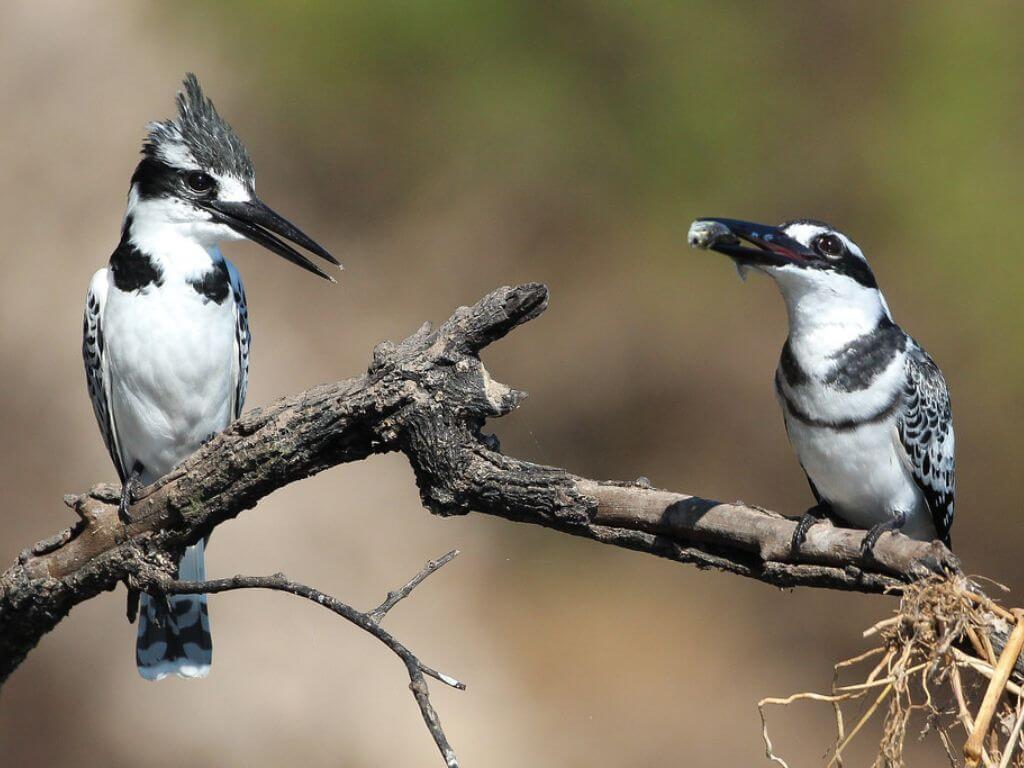
Plumage perfection
In the avian world, beauty often speaks louder than words. Vibrant plumage is a key tool for attracting a mate, with birds flaunting their feathers in a variety of dazzling displays. Males typically invest heavily in their appearance, evolving bold colours and extravagant tails to woo their partners.
The Knysna Turaco’s shimmering green feathers, highlighted with flashes of red during flight, are a marvel of evolution. Another contender for the title of “best-dressed” is the African Paradise Flycatcher, with its long, colourful tail feathers that sway dramatically during its aerial displays. These stunning birds highlight how essential appearance is in bird mating behaviour.
Spot them in action: Look for the Turaco in dense forests year-round, while the Flycatcher’s performances are best seen in summer.
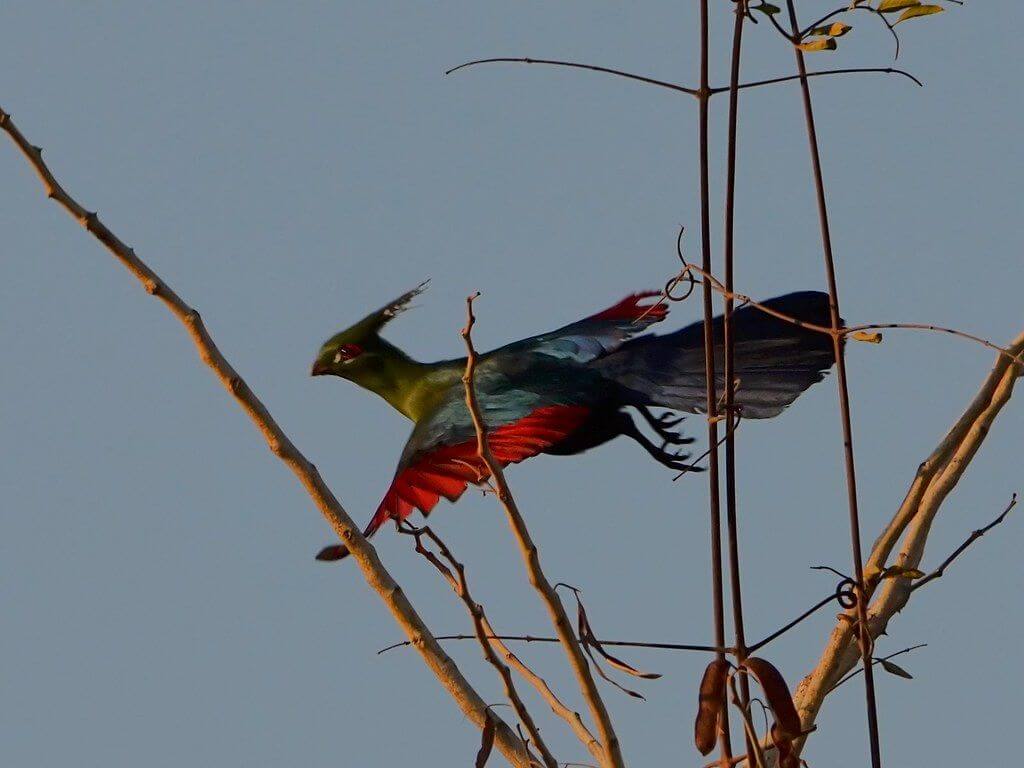
Courtship rituals
Courtship in the bird world often involves impressive displays of skill, persistence, and creativity. From dancing to architectural prowess, South African birds have developed diverse ways to captivate their partners.
Take the male Red Bishop, for instance. During the breeding season, he dons his striking red and black plumage and constructs multiple nests, inviting females to inspect his handiwork. Similarly, Secretary Birds engage in aerial displays and coordinated ground dances to demonstrate their strength and compatibility. These courtship behaviours highlight the ingenuity and dedication involved in bird mating strategies.
In your garden: You might spot weaver nests dangling from trees—evidence of a male’s tireless efforts to impress potential mates.
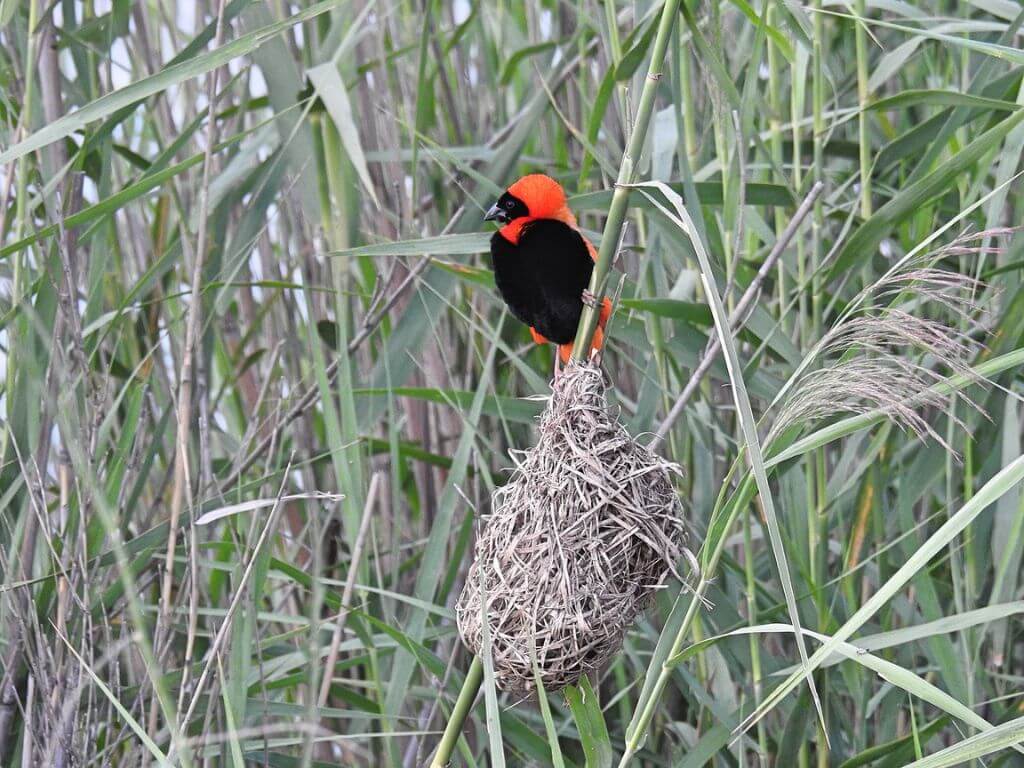
Birds that mate for life
While many birds seek new partners each season, some species form lifelong bonds. These loyal partnerships often include shared parenting duties and emotional connections that can last decades.
The African Penguin is a heartwarming example of monogamy. These charismatic birds return to the same mate year after year, engaging in mutual grooming and beak-touching as signs of affection. The Hadeda Ibis, often seen in noisy pairs, also exhibits strong pair bonds, with partners staying close even outside the breeding season.
Where to see: Visit Boulders Beach in autumn to witness African Penguins’ tender interactions, or listen for the Hadeda’s distinctive calls in urban gardens.
Want to attract more pairs to your garden? Find out which feeders birds love most.
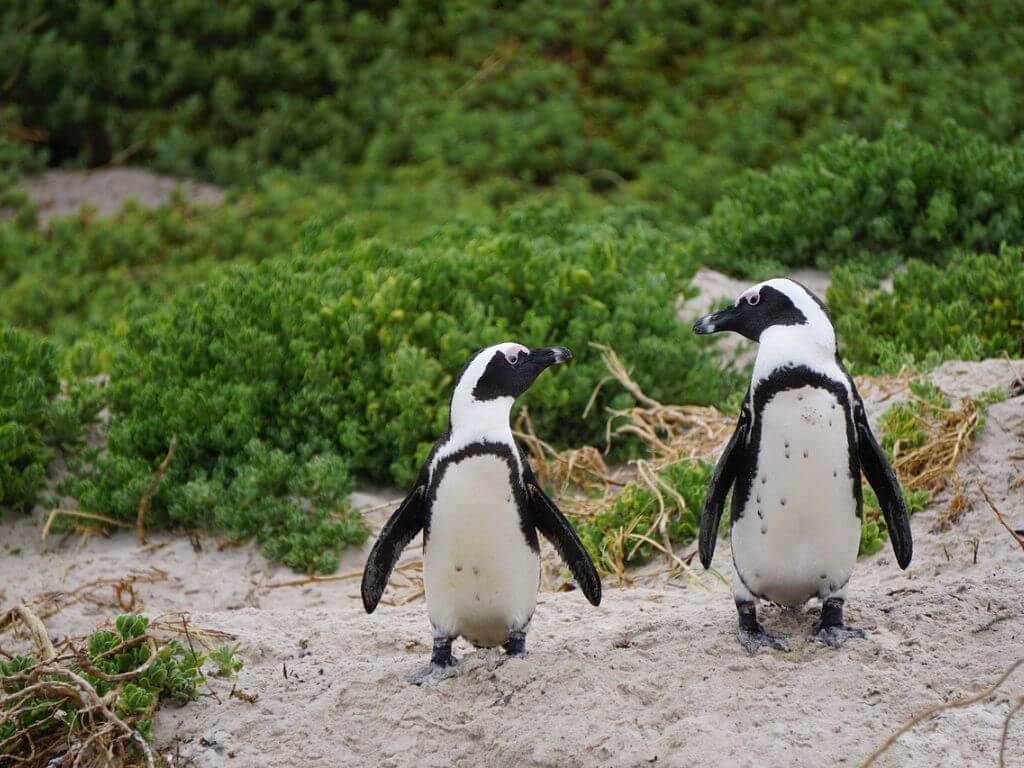
Decoding body language
Birds use more than their voices to communicate—they rely on subtle (and not-so-subtle) body language to woo their mates. Wing flapping, synchronised movement, and even head tilts are all part of the repertoire.
Flamingos, for instance, put on synchronised group displays during the breeding season. These graceful birds march together, twist their heads, and flap their wings in perfect harmony. On the ground, Secretary Birds spread their wings and “dance” in elaborate movements that signal their intent to bond. Observing these intricate gestures provides a deeper understanding of bird mating rituals.
When to watch: Flamingos are most active in shallow wetlands during spring, while Secretary Birds’ courtship displays can be seen in open savannas.
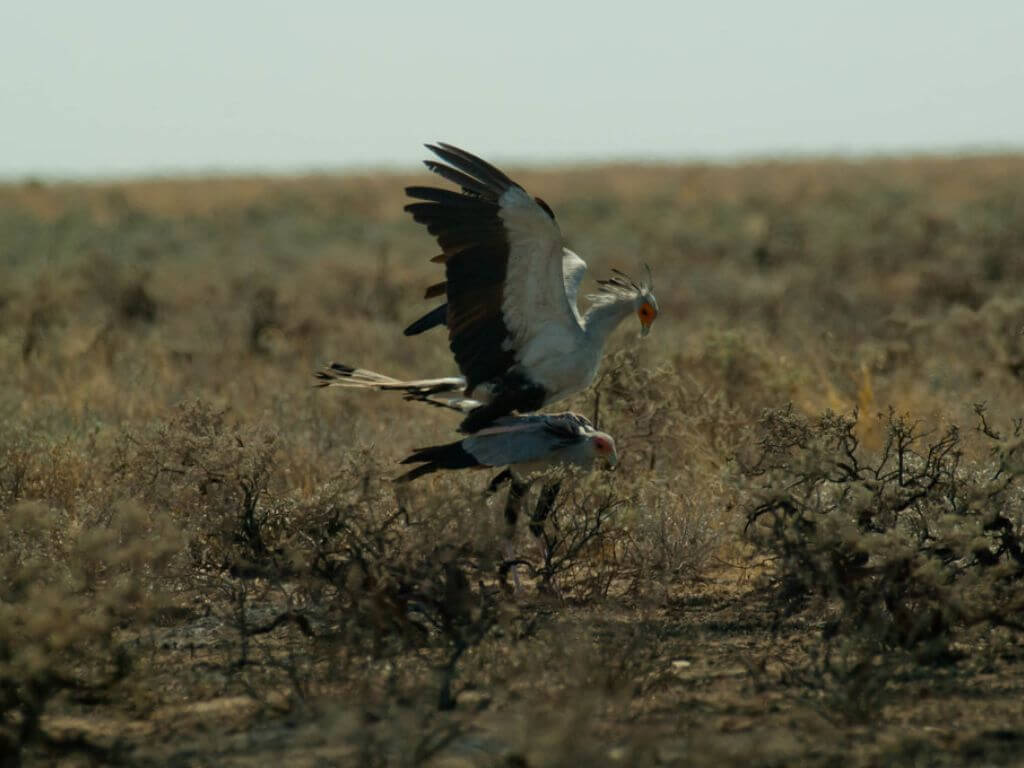
Building love nests
For many birds, the path to love lies in construction. Males often build intricate nests to impress potential mates, showcasing their resourcefulness and dedication.
The Cape Weaver is a master architect, weaving elaborate, suspended nests from reeds and grasses. These nests often dot suburban gardens in spring, a testament to the male’s relentless efforts. Meanwhile, the Hamerkop takes nest-building to an extreme, creating massive dome-shaped structures often used by multiple bird species.
In your backyard: If you spot Cape Weaver nests in your garden this summer, watch as the males tirelessly refine their creations to meet a female’s standards.
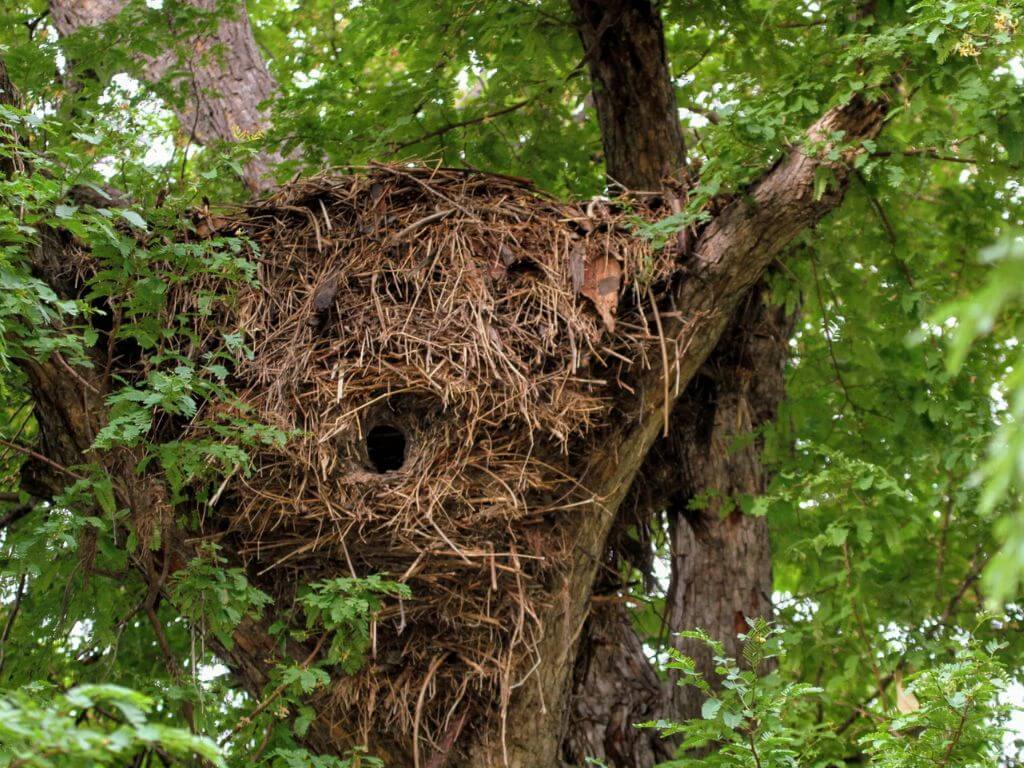
Unique and weird mating rituals
Some South African birds go above and beyond in their quest for love, displaying behaviours that are as fascinating as they are peculiar.
The Long-Tailed Widowbird is a prime example, with males growing tails up to half a meter long during the breeding season. These tails are showcased in a dramatic, bouncing flight that captivates females. Then there’s the African Jacana, which flips the script on traditional parenting roles—females lay eggs for multiple males, leaving them to handle incubation and chick-rearing. These extraordinary behaviours set bird mating in South Africa apart from the norm.
Best times to spot: Widowbirds are most visible in summer grasslands, while Jacanas can be found near waterbodies during the rainy season.
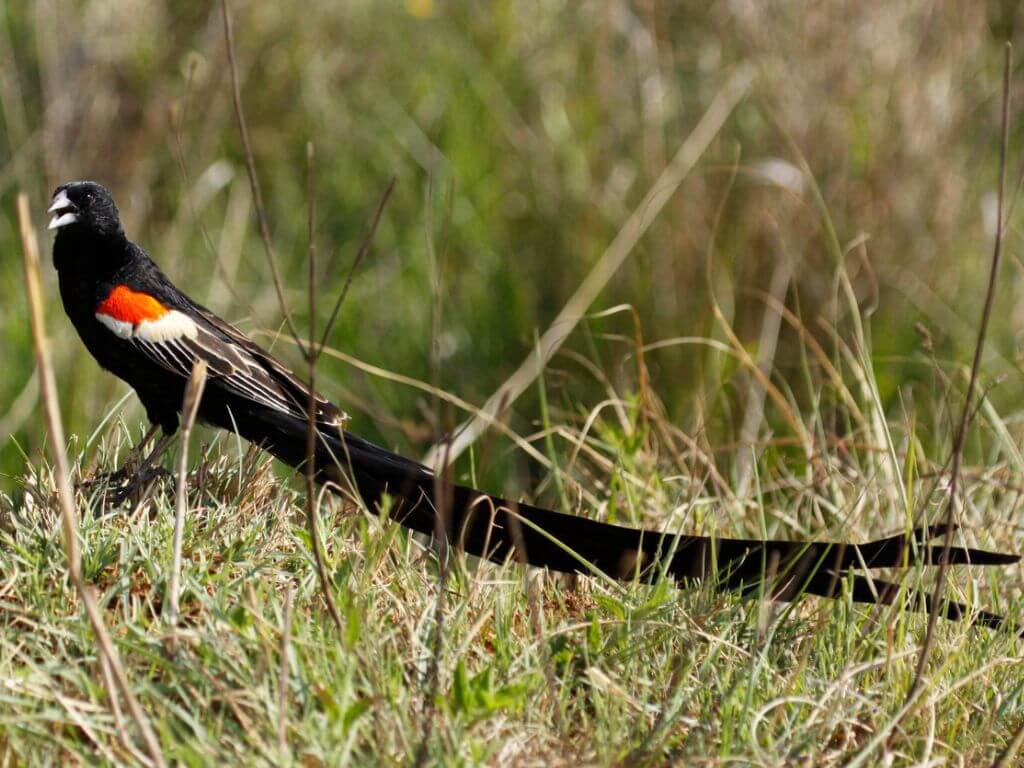
Bring love to your garden
South Africa’s birds remind us that love is a beautiful and complex dance. From dramatic plumage displays to tender lifelong bonds, these winged romantics inspire us with their dedication and creativity. To attract these incredible birds to your own backyard, sprinkle some Westerman’s Wild Bird Seed, and see if you can spot something interesting.
This February, take a moment to appreciate the joy of birding and the art of bird mating, it’s a love story unfolding right before your eyes.
Birdwatching isn’t just about looks, behaviour tells you a lot too. Learn how to ID birds like a pro.
